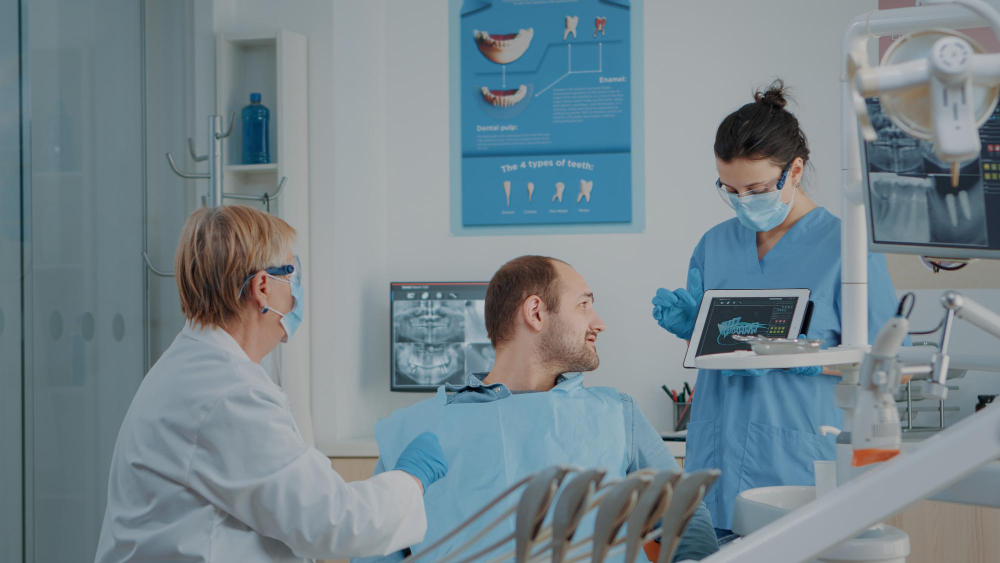- Your cart is empty
- Continue Shopping
New Dentistry Technology
-
clickin360
- Posted on
- 0 comments
New Dentistry Technology
You may not have heard about it yet, but in recent years, a number of new dentistry technology innovations have transformed dentistry as we know it. With current techniques and equipment, dentists are much better equipped than just a decade ago to treat many oral problems faster, less invasively and with much greater comfort for the patient. Do you know what new dental technologies have come into practice?

Intraoral Cameras
Although it was Invented in the late 1980s, intraoral cameras were not widely used until relatively recently. These wand-shaped devices project a magnified image of a patient’s mouth onto a screen. This image allows both the dentist and the patient to clearly and quickly observe the condition of the mouth and decide treatment, such as fillings or crowns.
This innovation has been a giant step in the way of empowering the dental patient, who thanks to the intraoral camera can see his mouth just like his dentist, to understand his explanations and ask questions in a much more informed way.
Digital Radiography
Digital radiology has numerous advantages over conventional radiographs. For starters, the process is faster than a traditional x-ray, so you have less radiation exposure.
The image is transmitted to the computer almost immediately, where clinic staff can adjust the brightness and contrast of the X-ray to aid diagnosis and not miss even the smallest problem.
In the same way, digital radiography greatly facilitates the work of comparing images taken at different times in the patient’s life, seeing their response to treatment, new problems and monitoring their oral health in general.
New Technology of Processing Titanium Implants
Osseointegration primarily depends on the implant surface quality.
- Surface is clean – Absence of any contamination.
- Surface Structure – The presence of pits with a diameter of 40 microns to 0.5 microns and less.
- The presence of calcium phosphate on the implants surface allows the implants to chemically bond with osteocytes.
Clean Dental Surface


these pictures shows how clean the surface of Top Implant looks. The surface is completely contamination free.
Surface Structure
The main contaminating element is aluminum oxide, which is sandblasted to the implant
surface to give the desired structure. Aluminum oxide is removed from the implant
surface by etching with mineral acids. Its presence affects the primary bone response
to the implant and can cause rejection. Over time, excess aluminum oxide causes peri-implantitis
Calcium Phosphate Presence
The picture below shows the structure of the surface with the presence of pits from a diameter of 40 microns to 0.5 microns and less. This surface formed with the help of SLA technology, chemical etching in mineral acids, and anodizing. At the moment, our surface combines the best characteristics of the SLA surface, i.e. large pits, and by anodizing we get calcium phosphate and small pits.
The presence of calcium phosphate on the implants surface makes it possible to form chemical bonds between implants and osteocytes. The calcium phosphate coating is applied electrochemically.



